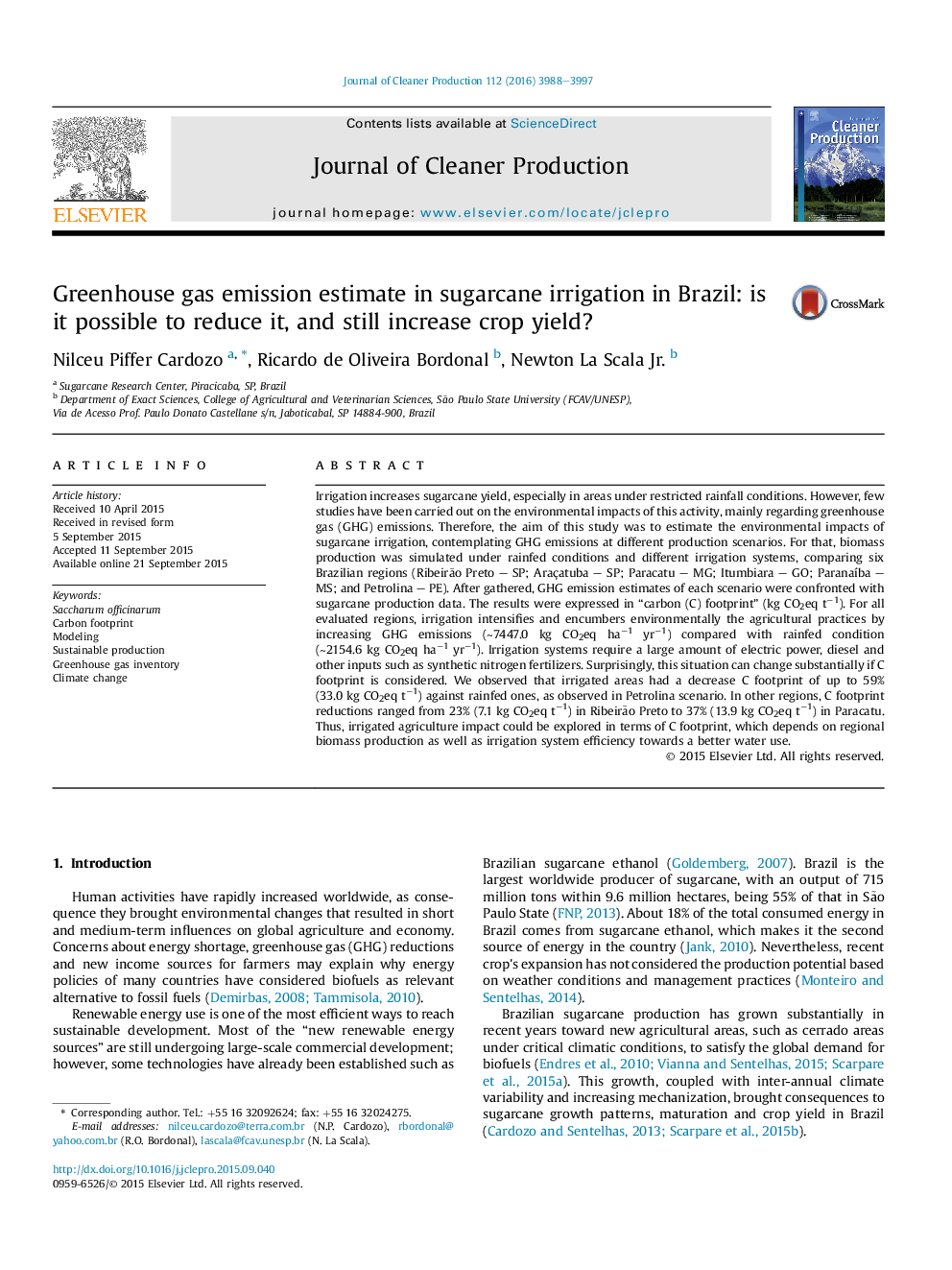| کد مقاله | کد نشریه | سال انتشار | مقاله انگلیسی | نسخه تمام متن |
|---|---|---|---|---|
| 10687942 | 1017969 | 2016 | 10 صفحه PDF | دانلود رایگان |
عنوان انگلیسی مقاله ISI
Greenhouse gas emission estimate in sugarcane irrigation in Brazil: is it possible to reduce it, and still increase crop yield?
ترجمه فارسی عنوان
برآورد انتشار گازهای گلخانه ای در آبیاری مشروبات الکلی در برزیل: آیا می توان آن را کاهش داد و همچنان محصول را افزایش می دهد؟
دانلود مقاله + سفارش ترجمه
دانلود مقاله ISI انگلیسی
رایگان برای ایرانیان
کلمات کلیدی
موضوعات مرتبط
مهندسی و علوم پایه
مهندسی انرژی
انرژی های تجدید پذیر، توسعه پایدار و محیط زیست
چکیده انگلیسی
Irrigation increases sugarcane yield, especially in areas under restricted rainfall conditions. However, few studies have been carried out on the environmental impacts of this activity, mainly regarding greenhouse gas (GHG) emissions. Therefore, the aim of this study was to estimate the environmental impacts of sugarcane irrigation, contemplating GHG emissions at different production scenarios. For that, biomass production was simulated under rainfed conditions and different irrigation systems, comparing six Brazilian regions (Ribeirão Preto - SP; Araçatuba - SP; Paracatu - MG; Itumbiara - GO; ParanaÃba - MS; and Petrolina - PE). After gathered, GHG emission estimates of each scenario were confronted with sugarcane production data. The results were expressed in “carbon (C) footprint” (kg CO2eq tâ1). For all evaluated regions, irrigation intensifies and encumbers environmentally the agricultural practices by increasing GHG emissions (â¼7447.0 kg CO2eq haâ1 yrâ1) compared with rainfed condition (â¼2154.6 kg CO2eq haâ1 yrâ1). Irrigation systems require a large amount of electric power, diesel and other inputs such as synthetic nitrogen fertilizers. Surprisingly, this situation can change substantially if C footprint is considered. We observed that irrigated areas had a decrease C footprint of up to 59% (33.0 kg CO2eq tâ1) against rainfed ones, as observed in Petrolina scenario. In other regions, C footprint reductions ranged from 23% (7.1 kg CO2eq tâ1) in Ribeirão Preto to 37% (13.9 kg CO2eq tâ1) in Paracatu. Thus, irrigated agriculture impact could be explored in terms of C footprint, which depends on regional biomass production as well as irrigation system efficiency towards a better water use.
ناشر
Database: Elsevier - ScienceDirect (ساینس دایرکت)
Journal: Journal of Cleaner Production - Volume 112, Part 5, 20 January 2016, Pages 3988-3997
Journal: Journal of Cleaner Production - Volume 112, Part 5, 20 January 2016, Pages 3988-3997
نویسندگان
Nilceu Piffer Cardozo, Ricardo de Oliveira Bordonal, Newton Jr.,
